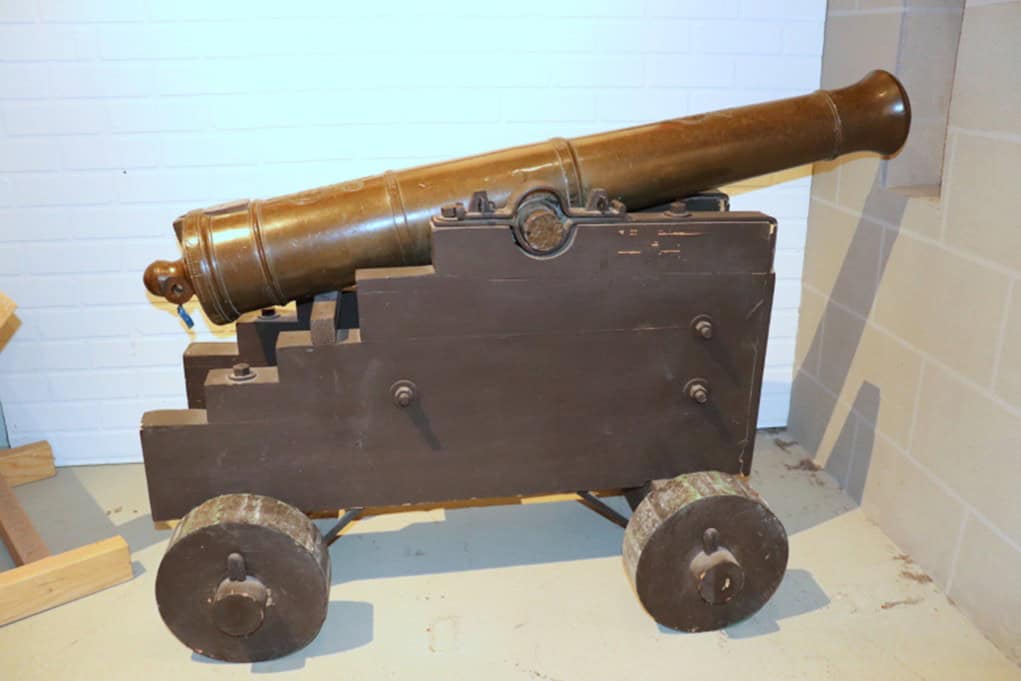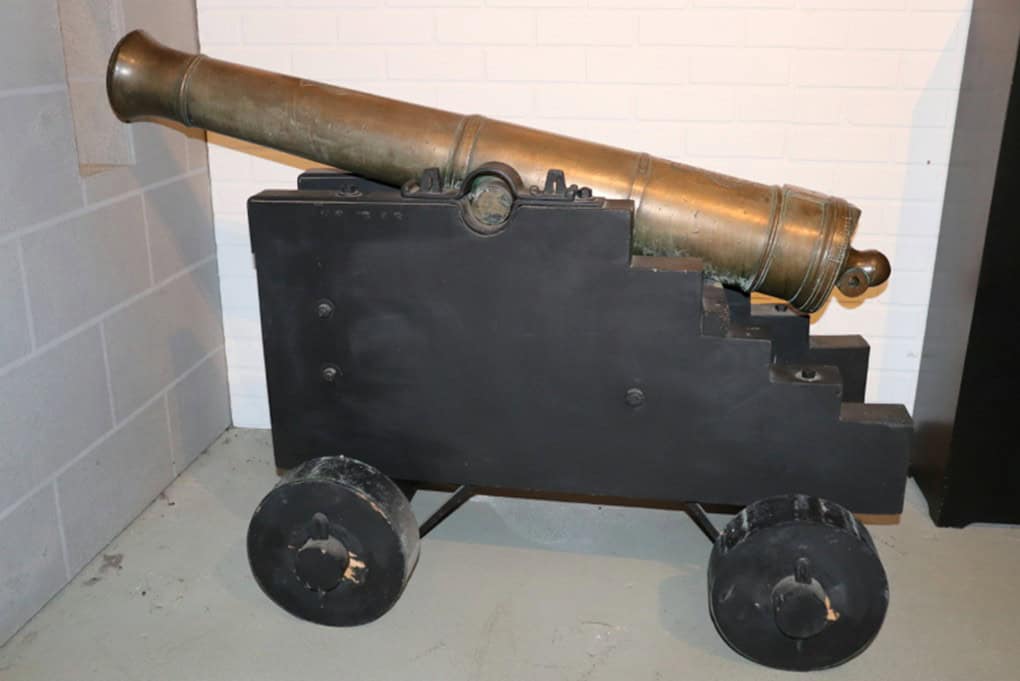3-Pounder Smoothbore Cannon


At the RCA Museum, two bronze 3-pounder smoothbore cannons flank the entrance to the museum galleries. The artillery came from Upper Fort Garry, a Hudson’s Bay Company (HBC) trading post during the 19th century in the Winnipeg area. The British army reinforced Fort Garry with various artillery pieces, including smoothbore cannons and mortars. These weapons were essential to colonial defences and vital to the region’s development. HBC decommissioned Fort Garry in the late 1860s, and today, the site is a historical attraction and a popular tourist destination.
The 3-pounder smoothbore fired a projectile weighing approximately 3 pounds, and soldiers loaded ammunition from the barrel’s muzzle or front end. Examples of smoothbore cannons include the 3-pounder, the 9-pounder, and the 32-pounder siege gun. The lack of rifling in the barrel meant that projectiles fired from smoothbore artillery did not have a spin, which made them less accurate at long ranges. However, at shorter distances, smoothbore cannons were effective at causing damage to enemy fortifications and troops.
Soldiers fired a variety of projectiles from the 3-pounder smoothbore, including solid shot (solid metal balls), canister shot (a container filled with small iron balls or other ammunition), and grapeshot (a canvas bag or metal can filled with iron balls). Solid shot was typically made of iron or steel and used in land warfare to attack fortifications and other structures at short and long ranges. Canister shot and grapeshot were most effective at short range and were commonly used to attack infantry formations and other targets within a few hundred yards of the cannon.
The 3-pounder smoothbore was a relatively small cannon, typically mounted on a field carriage, garrison carriage or naval mount, like the ones seen above. It was less powerful than larger artillery pieces but more portable and could be used effectively in various situations. During the Revolutionary War (1775-1783), British and American troops nickname it the “Grasshopper” due to looking like the insect when transported with handspikes and because it jumped backwards after firing like a grasshopper.
Despite many advantages, smoothbore artillery, such as the 3-pounder smoothbore, had some limitations. It was not as accurate at long ranges as rifled artillery and was less effective at penetrating fortifications or armour. As a result, it was gradually phased out in favour of rifled artillery as the 19th century progressed. Overall, smoothbore artillery played a crucial role in colonial military tactics during the 18th and 19th centuries.
By Andrew Oakden
